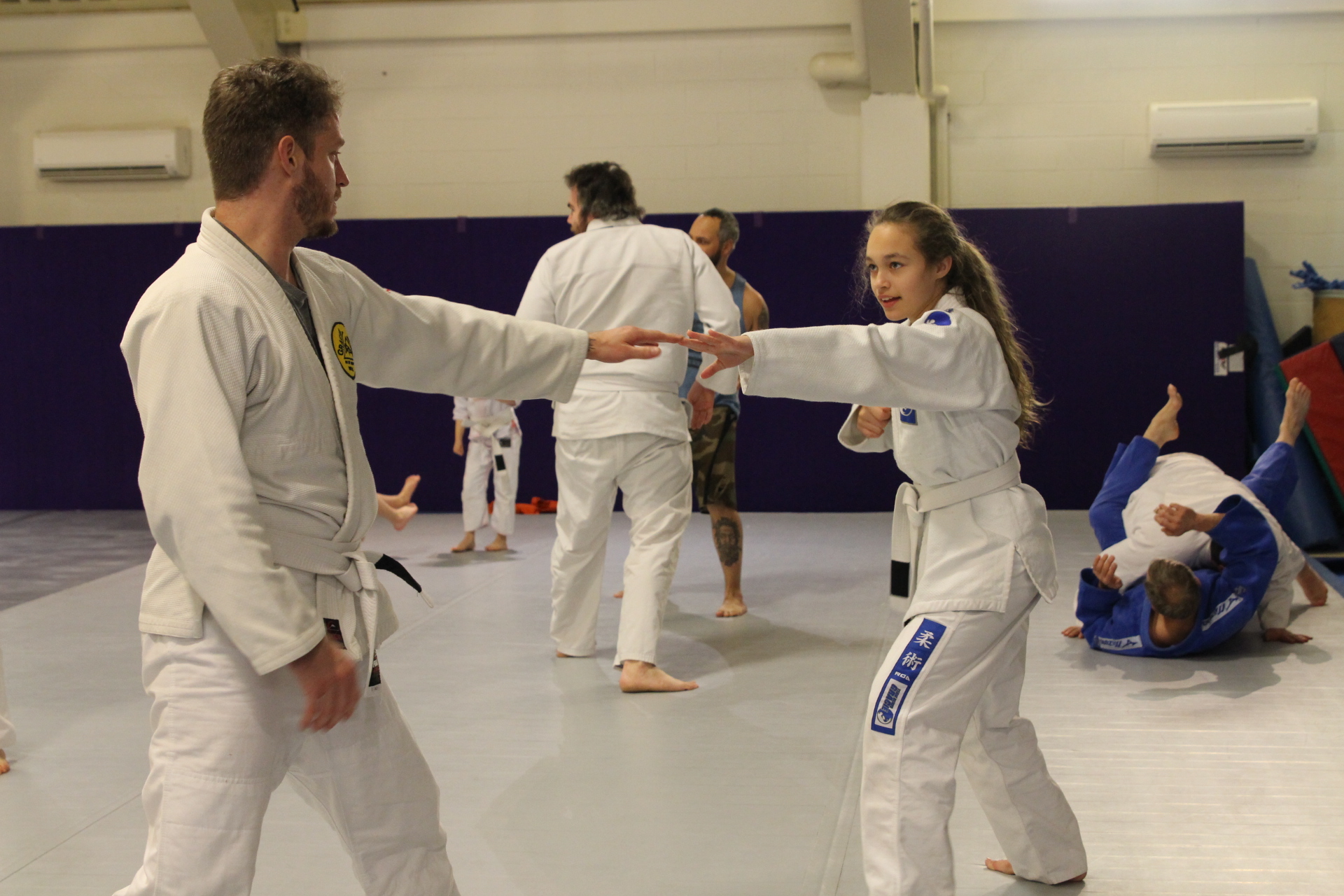
In the world of martial arts, the name Gracie is a major heavyweight. The Gracie family is synonymous with Brazilian Jiu-Jitsu and brought the sport to the United States over 40 years ago. A student of the Gracie family brought his teachings from Brazil to a local gym in Sitka.
In a brightly lit room, a dozen Sitkans donning belted robes are in a low lunge. They drag their back legs behind them, noses practically grazing the floor as they slither across. It looks exhausting. And I wonder, “Doesn’t a good fighter stay off the mat?” But the floor is one of your greatest allies in the world of Brazilian jiu-jitsu.
“Using the leg that is up, I’m going to lift my hips a little bit and I’m going to puuushhhh my hips up,” Eduardo Rocha demonstrated.
Rocha’s not a big guy, but tough. And a total stickler when it comes to form. He shows his students the right way to move. To grip. If fighting takes maturity, then he compares his students to toddlers, just learning how to crawl.
“Still crawling,” Rocha said. “They have a long, long road to go.”
And some are just kids. Cadence LaRose is here with her older brother, Ryatt. She boasts that even at 59 pounds, jiu-jitsu technique makes her a fearsome opponent.
“I’ve took him down and pinned him,” Cadence said.
“I’ve pinned you!” Ryatt protested.
“I pinned you,” Cadence retorted.
“We’re both the same,” Ryatt said. “We’re both good-ish. I don’t know.”
Core to the philosophy of jiu-jitsu is that weight class doesn’t matter. A smaller person can take on a bigger person — and win. That happened way back in 1993, when Royce Gracie defeated seven other competitors with more physical strength than him using a unique style of fighting his family developed in Brazil — during the first ever Ultimate Fighting Championship, or UFC.
That fight helped catapult Brazilian Jiu-Jitsu to international fame. Rocha brings it up in class.
“A skinny guy, looked like a lawyer, beat everyone,” Rocha said.

Rocha trained with the Gracies as young man in Rio de Janeiro. He’s now a 4th degree black belt and was the first person outside the family to get permission to open a gym in the United States. One of his students later moved back to Sitka – Brendan Jones – and that’s why Rocha is teaching a weekend class at this gym on an island in Alaska. Caleb Storm Harris can scarcely believe his luck.
“As far as getting pure, accurate training, this is the closest thing that we can get without actually going to Brazil,” Harris laughed.
Four months ago, Harris couldn’t touch his toes. Now, he’s here at the Hames Center at 5:30 in the morning five days a week. He considers BJJ a form of mindfulness practice.
“You know, the world is really, really busy,” Harris said. “And you can’t be anywhere else if someone is on top of you trying to get at you. And then you learn how to be wherever you are.”
Growing up in Rio, Rocha describes himself as a shy kid, insecure and afraid of a lot.
“We have only five channels on TV. No video game,” Rocha said. “You have to go out to the street to play. Every time I go out to play, the other kids beat me. And then when I turned 14, I thought, ‘This is going to end.'”
A poster of the founding father of the sport – Hélio Gracie – hangs on the gym wall, above us. That was Rocha’s first teacher and his lessons have gotten him through the stress of the past few years: leaving Brazil, his marriage ending and opening his own business.
“I have to live here for five years by myself, dealing with the different language, different culture, different people. Away from my family, my culture, away from everything,” Rocha said. “And I know for sure, because jiu-jitsu training, my mind and my heart to support that kind of pressure. You have to really break your body in a thousand pieces and rebuild piece by piece, but once you’re able to do that, you’ll be reborn a new person.”
“If you’re in a fight,” Rocha said later. “And you don’t know what you’re doing, you have to know how to fall.”
The lessons of jiu-jitsu readily translate beyond the mat, but meeting Rocha shows me how putting them into practice can take a lifetime.




